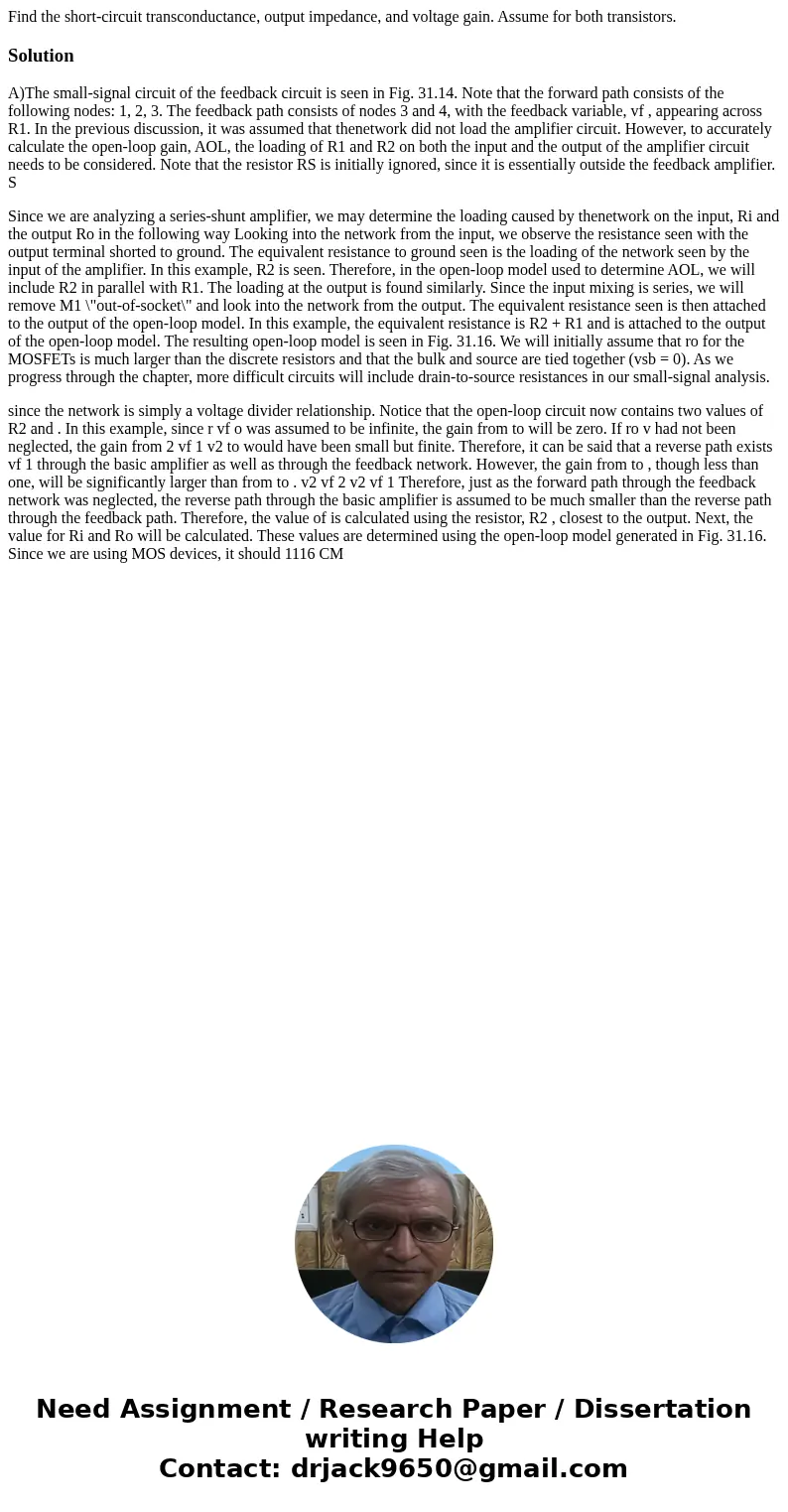Find the shortcircuit transconductance output impedance and
Solution
A)The small-signal circuit of the feedback circuit is seen in Fig. 31.14. Note that the forward path consists of the following nodes: 1, 2, 3. The feedback path consists of nodes 3 and 4, with the feedback variable, vf , appearing across R1. In the previous discussion, it was assumed that thenetwork did not load the amplifier circuit. However, to accurately calculate the open-loop gain, AOL, the loading of R1 and R2 on both the input and the output of the amplifier circuit needs to be considered. Note that the resistor RS is initially ignored, since it is essentially outside the feedback amplifier. S
Since we are analyzing a series-shunt amplifier, we may determine the loading caused by thenetwork on the input, Ri and the output Ro in the following way Looking into the network from the input, we observe the resistance seen with the output terminal shorted to ground. The equivalent resistance to ground seen is the loading of the network seen by the input of the amplifier. In this example, R2 is seen. Therefore, in the open-loop model used to determine AOL, we will include R2 in parallel with R1. The loading at the output is found similarly. Since the input mixing is series, we will remove M1 \"out-of-socket\" and look into the network from the output. The equivalent resistance seen is then attached to the output of the open-loop model. In this example, the equivalent resistance is R2 + R1 and is attached to the output of the open-loop model. The resulting open-loop model is seen in Fig. 31.16. We will initially assume that ro for the MOSFETs is much larger than the discrete resistors and that the bulk and source are tied together (vsb = 0). As we progress through the chapter, more difficult circuits will include drain-to-source resistances in our small-signal analysis.
since the network is simply a voltage divider relationship. Notice that the open-loop circuit now contains two values of R2 and . In this example, since r vf o was assumed to be infinite, the gain from to will be zero. If ro v had not been neglected, the gain from 2 vf 1 v2 to would have been small but finite. Therefore, it can be said that a reverse path exists vf 1 through the basic amplifier as well as through the feedback network. However, the gain from to , though less than one, will be significantly larger than from to . v2 vf 2 v2 vf 1 Therefore, just as the forward path through the feedback network was neglected, the reverse path through the basic amplifier is assumed to be much smaller than the reverse path through the feedback path. Therefore, the value of is calculated using the resistor, R2 , closest to the output. Next, the value for Ri and Ro will be calculated. These values are determined using the open-loop model generated in Fig. 31.16. Since we are using MOS devices, it should 1116 CM

 Homework Sourse
Homework Sourse